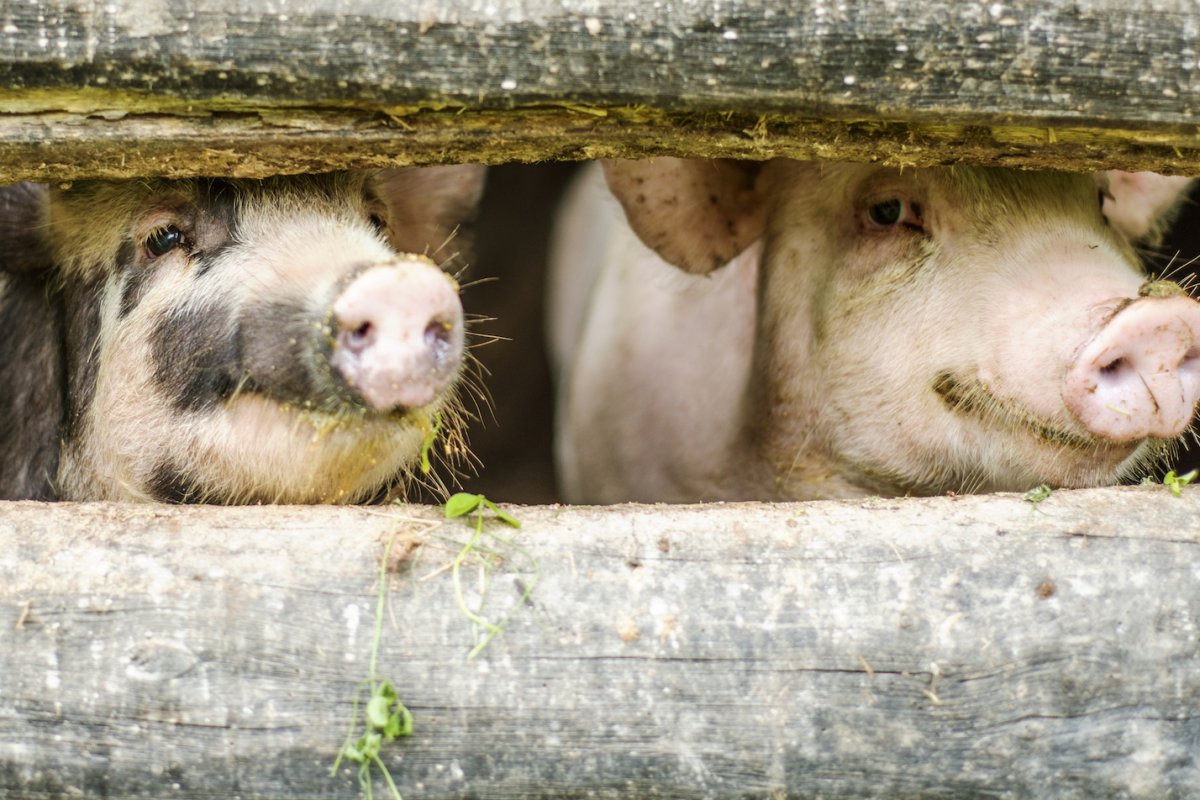Pigs and plasma

Above: Promoting swine health and safety in the food industry at large is the focus of a University of Minnesota study of plasma sources. (CVM stock image)
Researchers partner to find new applications for cold plasma
January 15, 2019
Plasma is partially or fully ionized gases with neutral net charge. It can assume many forms both naturally (lightning, the aurora borealis) and artificially (fluorescent lamps, cutting torches), and is used heavily in industrial applications such as welding, waste destruction, and semiconductor processing.
Plasma sources can also be engineered to produce plasma at close-to-room temperature—often referred to as cold plasma—enabling the treatment of highly heat-sensitive surfaces, such as some foods.
Peter Bruggeman, a mechanical engineering professor and director of the High Temperature and Plasma Laboratory in the College of Science and Engineering, and Sagar Goyal, a professor in the College of Veterinary Medicine, are part of a U.S. Department of Agriculture-funded study that's looking into the use of cold atmospheric gaseous plasma technology for decontaminating food and food-processing surfaces.
The duo's team of University of Minnesota researchers is seeing success in the lab—bacteria and viruses stand little chance against the cold plasma they are making.
Plasma, served cold
According to the Centers for Disease Control and Prevention, food-borne illness costs the U.S. economy about $77 billion each year and human noroviruses are responsible for 50 percent of the total food-borne gastroenteritis illness (with a known pathogen) caused annually.
“Food works as a vehicle to transfer viruses from a contaminated person to the consumers, especially foods that are not exposed to heat,” said Hamada Aboubakr, a postdoctoral associate working on the project. “That’s why the team is looking for a technology using cold plasma—it can decontaminate berries or leafy greens without a need for cooking and boiling.”
Laboratory results look extremely promising.
“If a surface is contaminated with viruses or bacteria, we can kill them,” Goyal said. “If food is contaminated—as early as during harvest by food handlers—our goal is to use cold plasma to kill the contaminants.”
But how might the average restaurant afford technology that effectively delivers cold plasma to these foods?
Ankit Moldgy, a graduate student in the Department of Mechanical Engineering working on the project, is looking to develop a mechanism for effectively and safely delivering the plasma-produced active agents to its targeted bacteria and viruses. Moldgy will also study how to make that process cost-effective.
A pig impact
While swine farmers today are already using air filtration systems to mitigate disease, these are not foolproof, noted the researchers.
Their two-for-one approach—combining air filters and cold plasma—could help eliminate air-borne swine disease affecting swine. This includes the porcine reproductive and respiratory syndrome virus (PRRSv), which costs the U.S. swine industry more than $580 million each year.
Gaurav Nayak, a Ph.D. student in the Department of Mechanical Engineering, is using his Kermit and Ione Ebeltoft Interdisciplinary Doctoral Fellowship to investigate ways to integrate the plasma generation unit into air filtration systems.
He is working closely with Bruggeman, his advisor, on this project. Nayak’s mentors also include Goyal and Montserrat Torremorell, an associate professor in the University of Minnesota’s Swine Program. Torremorell plans to help Nayak assess his prototype’s efficacy.
Edited from Profiles, magazine of the College of Veterinary Medicine.
If you’d like to support faculty and student research, visit our CSE giving page.
